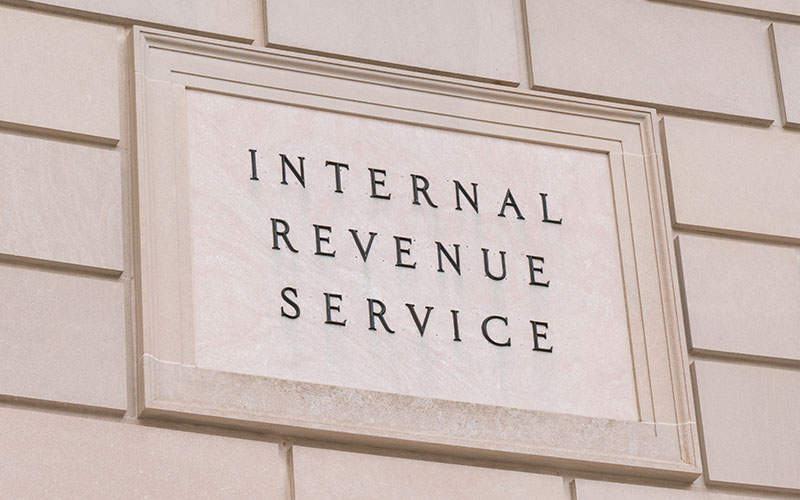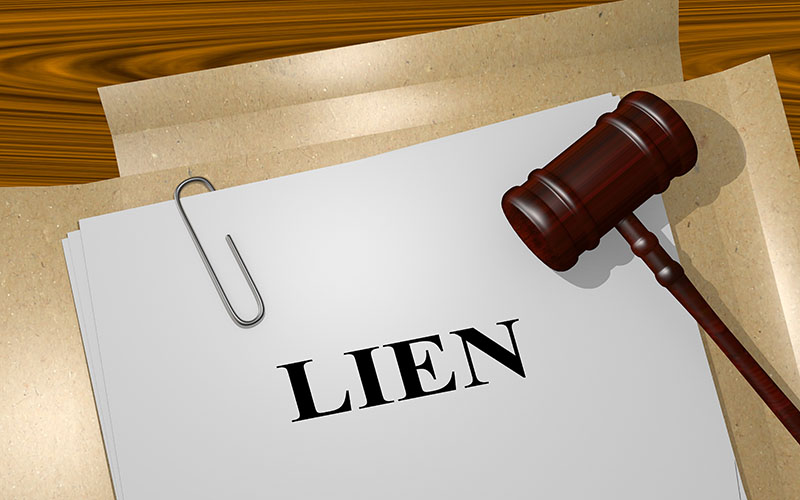Innocent Vs Injured Spouse: Know Your Options For Tax Relief

Innocent Spouse vs. Injured Spouse Relief: What Are The Differences & How Do You Apply?
When you and your spouse file taxes jointly, the IRS assumes that you are both responsible for all debts attached to that tax return and that the return was prepared honestly.
However, that doesn’t always happen.
If, for example, your spouse conveniently “forgets” to include their gambling winnings in your tax return, are you completely liable for that falsification and any debts that result from it? What about if your spouse still owes back child support from before you were married and your tax refunds are used to pay that back?
The IRS understands that not all joint returns are as simple as they may appear.
To help protect spouses from the choices made by the other party, the IRS created innocent spouse relief and injured spouse relief, both of which you can apply for from the federal agency.
But what are these two types of relief, and what are the differences between innocent spouse relief and injured spouse relief?
What Is Innocent Spouse Relief?
If you and your spouse (or former spouse) filed married filing jointly, and there was a known error on your tax return, Innocent Spouse status can shield you from any negative consequences. The errors on your tax return must have been willful lies or misrepresentations on the part of your spouse, and you cannot have known about them until after your return was filed.
How Do You Qualify For Innocent Spouse Relief?
To qualify for Innocent Spouse status, your current or former spouse must have filed one or more tax returns with one or more fundamental errors:
- Unreported income
- Reported income incorrectly, such as reporting too little income
- Improper claiming of deductions and exemptions
The errors that qualify you for Innocent Spouse status aren’t just simple mistakes; your spouse had to have known they were lying on your tax return when it was submitted.
Some examples of lies in filing a tax return include:
- Leaving out income earned from a second job or “side gig” for the purpose of decreasing tax liability
- An expense claimed as a deduction was never paid for, such as claiming $5,000 for “advertising” for a small business but never paying a vendor that money
- Claiming an expense that is not deductible as credit, such as claiming a “business fee” deduction that was really to pay state fines or something else that doesn’t qualify as a deduction
- Claiming a deduction for something that can’t be proven, such as claiming a “home security system” to protect the home office when the money really was spent on general household goods and expenses
And you can’t have known that your spouse lied on your tax returns until after they were filed in order to qualify for Innocent Spouse status.
If you can prove that your spouse willfully lied on your tax returns and that you had no knowledge of the lie until after you’d signed it, the IRS believes you shouldn’t be subject to any penalties that result from the lies.
How Do You File For Innocent Spouse Relief?
To request innocent spouse relief from the IRS, you need to file Form 8857. If you are requesting relief from more than six tax years, you will need to file an additional Form 8857.
File your Form 8857 as soon as you are aware of the errors your spouse made on your tax returns. You can be made aware of these errors after the IRS has examined your tax return and proposed increasing your tax liability, or the IRS can send you a notice.
You have two years from the IRS’s first attempt to collect on this new tax debt to file your Form 8857, so don’t delay filing if you don’t have all the documentation to back up your innocent spouse claims.
There are some situations where you may get an exemption from the IRS to pass this two-year mark, but they’re difficult to secure. Learn more in the IRS’s publication on Innocent Spouse Relief.
How Does Innocent Spouse Relief Work?
If you can prove that you were unaware of your spouse’s omissions or fabrications on your tax return and are granted Innocent Spouse status, then you will not be considered liable for any consequences by the IRS.
For example, if your improperly completed tax return resulted in a debt to the IRS of $5,000, you will not be personally held responsible for that money. However, if your spouse uses joint money to pay the tax debt, you are effectively paying the IRS for that erroneous tax return even if it is not your debt to pay personally.
What Is Injured Spouse Relief?
When you file married filing jointly with your spouse, the IRS doesn’t distinguish between your money and your spouse’s when it comes to paying debts. However, if that debt existed well before your marriage, you may be able to prove that your money, such as your wages, or your tax credits shouldn’t be used to pay back your spouse’s obligations.
How Do You Qualify For Injured Spouse Relief?
If your spouse owes certain types of debts and you’re expecting a tax refund due to overpayment but the IRS holds some of it to pay the back debt, you may qualify for Injured Spouse status.
The types of debt owed by your spouse that qualify you for Injured Spouse status include:
- Federal taxes
- State income taxes
- State unemployment compensation debts
- Child or spousal support payments
- Federal non-tax debt, such as defaulted student loans
If you can prove that the debt was accrued before you ever married your spouse, the IRS may consider you an injured spouse, meaning that money owed to you can’t be taken to repay your spouse’s debts.
Additionally, if you are divorced or separated from the person whose debts your money is going to pay, the IRS can consider you an Injured Spouse.
How Do You File For Injured Spouse Relief?
When the IRS uses your owed refund to pay toward a past debt, they mail a Notice of Offset.
If you receive this notice, file a Form 8379, Injured Spouse Allocation, with the IRS. You have three years from the due date of the original return, or two years from the date that you first paid the tax that was later offset, whichever is later, to file your Form 8379.
As part of filling out the Form 8379, you will list what portion of the owed refund will be allocated to you, and which to your spouse. You can divide up the allocation any way you wish as long as you and your spouse agree.
If you and your spouse cannot agree on the allocation, the IRS will allocate the payments based on a formula.
You can file the Form 8379 with your tax return or your amended tax return. If you choose this route, attach your completed Form 8379 to the return when submitting it.
Form 8379 also can be filed after you file your tax returns. In this case, attach all applicable W-2s or 1099s for both spouses to the form.
Submit your Form 8379 to the service center in your area.
The IRS has 14 weeks to process and respond to your application, or 11 weeks if you file Form 8379 electronically.
How Does Injured Spouse Relief Work?
When the IRS determines that you qualify for Injured Spouse status, you will receive the refund owed to you, and your spouse’s portion of your refund will be used to pay back their debt.
However, because the IRS has up to 14 weeks to decide your status, it can take a while to receive your refund.
You will need to file Form 8379 every year until your spouse’s past debt is paid off.
Find Help For Your Tax Woes
Taxes can be complicated, but you don’t have to handle them alone..
At the Credit Review, we’ve collected all the best tax relief professionals, debt relief companies, student loan refinancing services, and more so you can find the financial service that best suits your needs. Learn more about your tax relief options here.
Can I Qualify for Both Innocent Spouse Relief and Injured Spouse Relief in the Same Year?
Yes, in some extreme situations you may qualify for innocent spouse relief and injured spouse relief in the same year.
Where Do I Get the Forms to File for Innocent Spouse Relief and Injured Spouse Relief?
You can get both by writing to the IRS or visiting their website, irs.gov.
Does It Cost Money To File For Innocent Spouse Relief Of Injured Spouse Relief?
Unless you hire a tax professional to help you, it does not cost money to file for either innocent spouse relief or injured spouse relief.
Can I Still Apply For Injured Spouse Relief If I Didn’t Work This Year?
Yes. If you filed a joint return with your spouse and your refund was held to pay for your spouse’s past debts, you can file for injured spouse relief.
Can I Apply For Innocent Spouse Relief Or Injured Spouse Relief If I’m Divorced Or Separated From My Spouse?
Yes. If you and your spouse filed taxes married filing jointly at the time of a tax return fraud (innocent spouse relief) or a refund withheld for back payments (injured spouse), you can still qualify.
Do I Have To Send In Copies Of My Tax Returns With Form 8857 Or Form 8379?
If you are filing for injured spouse relief at the time that you file your tax returns, just attach the completed form to your return.
If you are filing for injured spouse relief after filing your tax returns, just send in the completed Form 8379 as well as any W-2s or 1009s for you and your spouse.
When filing the Form 8857, you do not need to include your tax return. You should include any W-2s or 1099s for you and your spouse you may have access to.
Edited by:
Bryan Huynh
•
Product Tester & Writer



























